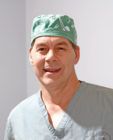
In 1993, we wrote an editorial for Oral Health entitled “Wisdom Teeth: To Extract or Not?” and our accompanying two-part review on the current concepts and controversies involving third molar surgery. The articles provided a discussion of the indications for third molar removal and the influences of a variety of factors upon the surgical outcome. In honour of our silver anniversary, we thought to ask if wisdom tooth surgery has changed over the last 25 years?
It is only human nature to be proud of the complex orthognathic and reconstructive procedures that we perform to substantially improve a patient’s function and appearance. However, it is so valuable to spend time reviewing the more common dental and surgical procedures to improve our knowledge, technical skill and patient management.
PubMed allows a search of the biomedical literature from MEDLINE, scientific journals and online books. An online search of ‘third molar surgery’ from 1993 to the present produced over 4200 citations. To stay current of what is still the most common procedure in the practise of oral and maxillofacial surgery required reading an article every other day over the past 25 years.
Advancements have shaped and expanded dentistry during these past years from office computerization to clear-aligner orthodontics, new and improved restorative materials, the discovery of dental health’s influence on systemic disease and so many more.
The purpose of this editorial is not to detail the evolution of dentistry but to think if the sum of these influences has changed our contemporary management of third molars. There are well defined criteria for the removal of impacted third molar teeth, all of which are still valid and supported by the literature. The risks and benefits of intervention and non-intervention have been identified, studied and refined by numerous investigators. The parents of current wisdom tooth patients, who were once our patients themselves, routinely claim déjà vu in relating their prior surgical experiences.
Nonetheless, certain things do stand out to us. First of all, a greater number of older patients over 40 are requiring impacted third molar surgery. This age category is known to have higher risk outcomes and a number of these patients are significantly medically compromised. Perhaps removing potentially problem third molars earlier would reduce the risks in our aging population. Secondly, as we look down at our surgical tray set-up, in spite of the many developments in dental instrumentation, intraoral cameras, dental microscopy and loupes, as well as lasers, we use much of the same instrumentation over the years. Not just the same type of surgical instruments, but actually the same exact pair of forceps and set of Potts elevators! We still use the same materials to control bleeding and pack dry sockets with a medicated dressing that dates back some 2000 years.
Yet looking back, experience has probably played the most influential role in our surgical practice. Digital radiography, CBCT imaging and Stealth navigation technology have revolutionized trauma and pathology management, dental implantology and reconstructive grafting but third molar treatment decisions are still based on good judgement and common sense. Each clinician begins a treatment plan using traditional methods of evaluation to assess the risk-benefit ratio. Our course of action tempered to account for the patient’s current and future health, their social and financial setting, and the patient’s tolerance for risk, tailoring a solution to each patient’s individual needs, and striving to provide a desired favourable outcome.
What we did, wrote and continue to believe was not the inspiration for the quote “Plus ca change, plus c’est la meme chose”. It was an 1849 idea of French journalist Jean-Baptiste Alphonse Karr, and his more familiar english translation, “the more things change, the more they stay the same”. As our profession continues meaningful technological change, the many underlying traditional fundamentals of patient management remain the same. OH
About the Editors
 Dr. Tim Sands is an Oral and Maxillofacial Surgeon. He maintains a private practice, Woodbridge Oral Surgery, in Woodbridge, Ontario.
Dr. Tim Sands is an Oral and Maxillofacial Surgeon. He maintains a private practice, Woodbridge Oral Surgery, in Woodbridge, Ontario.

Dr. Bruce Pynn is Oral Health’s editorial board member for oral and maxillofacial surgery. He maintains a private practice in Thunder Bay, ON. He is an Associate Professor, North Ontario School of Medicine, Lakehead University, and Chief of Dentistry, Thunder Bay Regional Health Sciences Center. Past President, Ontario Society of Oral and Maxillofacial Surgery.
RELATED ARTICLE: Choosing the Right Time for Wisdom Teeth Extraction












